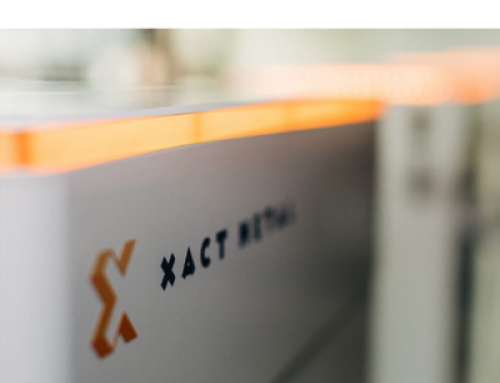Bound Metal Deposition (BMD) is an extrusion-based metal additive manufacturing (AM) process where metal components are constructed by extrusion of a powder-filled thermoplastic media. Bound metal rods—metal powder held together by wax and polymer binder—are heated and extruded onto the build plate, shaping a part layer-by-layer. Once printed, the binder is removed via the debind process, and then sintered—causing the metal particles to densify.
Prevalent metal AM technologies involve melting powder or wire feedstock using lasers or electron beams. While viable, these systems have substantial facilities requirements to accommodate power and safety requirements. Additionally, localized melting and rapid solidification create complex stress fields within parts, requiring rigid support structures to aid heat dissipation and resist shrinkage. As a result, support removal often requires machining.
The Desktop Metal Studio System leverages BMD to deliver an office-friendly metal 3D printing solution. There are no loose powders or lasers associated with fabrication. In terms of support removal, parts are printed with their supports which are separated by ceramic interface media (or the Ceramic Release Layer™) that does not bond to the metal. This material disintegrates during sintering, making it easy to remove supports by hand.

BMD can be applied to virtually any sinter-able powder that can be compounded in a thermoplastic media. This includes industrially-relevant metallic alloys such as stainless steels, tool steels, and other metals that are difficult to process via other AM techniques such as refractory metals, cemented carbides, and ceramics.

Extrusion-based additive manufacturing can build structures and geometries previously unachievable via bulk manufacturing processes—including MIM, press-and-sinter powder metallurgy, and reusable mold casting techniques. BMD results in near-net-shape parts with the strength and accuracy needed for functional prototyping, jigs & fixtures, tooling applications, and in some cases, low-volume production.





Leave A Comment